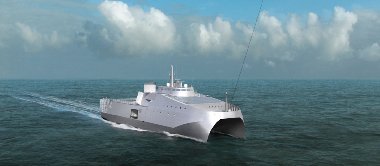OKABAYASHI, Mme Aimi (2023) Deep super-resolution of sequences of satellite images. PFE - Projet de fin d'études, ENSTA.
Fichier(s) associé(s) à ce document :
| PDF 712Kb |
Résumé
Satellite imagery is a major tool for geoscience. However, there is a trade-off between choosing systems like Sentinel-2, which have a high temporal resolution but a low spatial resolution, and systems like SPOT-6, which have a high spatial resolution but a low temporal resolution. To benefit from the high temporal resolution of Sentinel-2 at a high spatial resolution, we propose to apply a super-resolution (\gls{SR}) technique. In \gls{remote sensing}, we have access to multiple images of a same scene at different times. As satellite images suffer from perturbations, fusing information of multiple images can be beneficial to generate a more accurate \gls{HR} image. This approach is referred to as Multi-Image Super-Resolution (\gls{MISR}), in contrast to Single-Image Super Resolution (\gls{SISR}) where we perform the super-resolution based on a single image. This thesis compares both settings, SISR and MISR, on satellite data. We find that current MISR models like HighRes-net recursive fusion do not properly take into account the temporal irregularity in image time series. We propose a new \gls{MISR} method, HighResnet L-TAE, where we replace the fusion module of HighRes-net recursive fusion with a module that adds temporal attention to the time series. We find that our method is able to grasp more temporal information, and yields the best quantitative results among the different \gls{SISR} and \gls{MISR} models proposed in this thesis. Another objective of this thesis is to explore diffusion models and to assess their performance on satellite data. To do this, we base our work on SRDiff, a diffusion model for SISR. SRDiff is originally conditioned by an LR encoder, RRDB. Therefore, we replace the conditioning, first with the upsampled LR image, and then by HighRes-net L-TAE to adapt SRDiff to the MISR setting. We find that SRDiff conditioned by RRDB and SRDiff conditioned by the upsampled image produce the visually most appealing results of all the methods. However, they underperform in terms of quantitative results. SRDiff conditioned by HighRes-net L-TAE yields worse visual and quantitative results compared to SRDiff in the SISR setting. Despite these results, we find that conditioning with RRDB provides improvement in terms of quantitative results compared to the upsampled LR image. This suggests that better conditioning can improve the performance of diffusion models for the SR task.
| Type de document: | Rapport ou mémoire (PFE - Projet de fin d'études) |
|---|---|
| Mots-clés libres: | Remote Sensing |
| Sujets: | Sciences et technologies de l'information et de la communication Mathématiques et leurs applications |
| Code ID : | 9873 |
| Déposé par : | aimi Okabayashi |
| Déposé le : | 13 nov. 2023 10:17 |
| Dernière modification: | 13 nov. 2023 10:17 |








